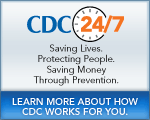Options for Controlling Influenza
Published for the 2010-11 Influenza Season; Adapted for the 2011-12 Influenza Season
The most effective strategy for preventing influenza is annual vaccination. Strategies that focus on providing routine vaccination to persons at higher risk for influenza complications have long been recommended, although coverage among the majority of these groups remains low. Routine vaccination of certain persons (e.g., children, contacts of persons at risk for influenza complications, and health-care personnel [HCP]) who serve as a source of influenza virus transmission might provide additional protection to persons at risk for influenza complications and reduce the overall influenza burden. However, coverage levels among these persons need to be increased before effects on transmission can be measured reliably. Antiviral medications can be used for chemoprophylaxis and have been demonstrated to prevent influenza illness. When used for treatment, antiviral medications have been demonstrated to reduce the severity and duration of illness, particularly if used within the first 48 hours after illness onset. However, antiviral medications are adjuncts to vaccine in the prevention and control of influenza, and primary prevention through annual vaccination is the most effective and efficient prevention strategy. Despite recommendations to use antiviral medications to treat hospitalized patients with suspected influenza, antiviral drugs are underused.
Reductions in detectable influenza A viruses on hands after handwashing have been demonstrated, and handwashing has been demonstrated to reduce the overall incidence of respiratory diseases. Nonpharmacologic interventions (e.g., frequent handwashing and improved respiratory hygiene) are reasonable and inexpensive. However, the impact of hygiene interventions such as handwashing on influenza virus transmission is not well understood, and hygiene measures should not be advocated as a replacement or alternative to specific prevention measures such as vaccination. Few data are available to assess the effects of community-level respiratory disease mitigation strategies (e.g., closing schools, avoiding mass gatherings, or using respiratory protection) on reducing influenza virus transmission during typical seasonal influenza epidemics. An interventional trial among university students indicated that students living in dormitories who were asked to use surgical face masks, given an alcohol-based hand sanitizer, and provided with education about mask use and hand hygiene during influenza season had substantially lower rates of ILI compared with students in dormitories for whom no intervention was recommended. However, neither face mask nor hand sanitizer use alone was associated with statistically significant reduction in ILI. During the 2009 pandemic, one study indicated that having members of households in which an influenza case was identified discuss ways to avoid transmission was associated with a significant reduction in the frequency of additional cases after one household member became ill, suggesting that education measures might be an effective way to reduce secondary transmission. Limited data suggest that transmission of seasonal influenza or ILI among household members can be reduced if household contacts use a surgical face mask or implement hand washing early in the course of an ill index case patient's illness. However, these interventions might supplement use of vaccine as a means to reduce influenza transmission or provide some protection when vaccine is not available.
NOTE: For 2012-13 Influenza Prevention and Control Recommendations see “Prevention and Control of Influenza with Vaccines: Recommendations of the Advisory Committee on Immunization Practices (ACIP) – United States, 2012-13 Season,” MMWR 2012 Aug 17; 61(32):613-618.
For 2011-12 Influenza Prevention and Control Recommendations see “Prevention and Control of Influenza with Vaccines: Recommendations of the Advisory Committee on Immunization Practices (ACIP), 2011,” MMWR 2011 Aug 26; 60(33):1128-1132.
For 2010-11 Influenza Prevention and Control Recommendations see “Prevention and Control of Influenza with Vaccines: Recommendations of the Advisory Committee on Immunization Practices (ACIP), 2010,” MMWR 2010 Aug 6; 59(RR08):1-62.
Contact Us:
- Centers for Disease Control and Prevention
1600 Clifton Rd
Atlanta, GA 30333 - 800-CDC-INFO
(800-232-4636)
TTY: (888) 232-6348 - Contact CDC-INFO



